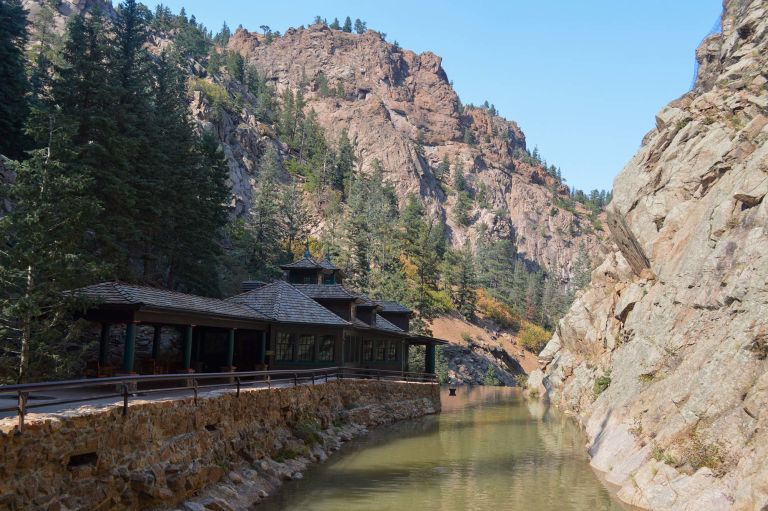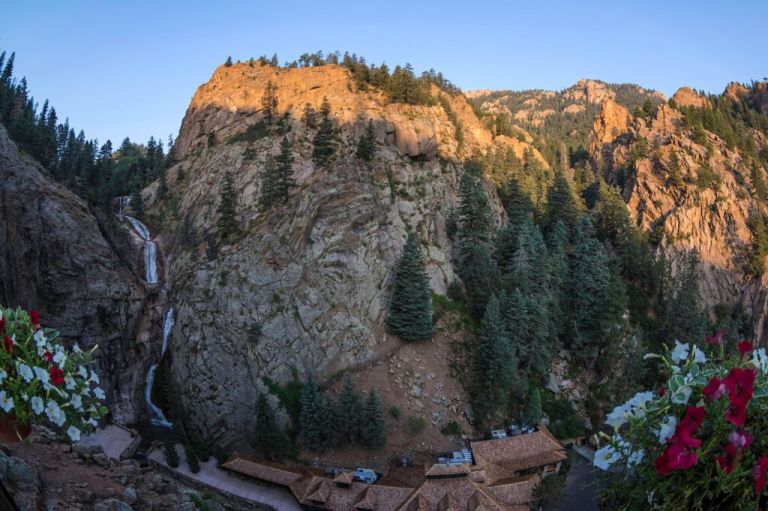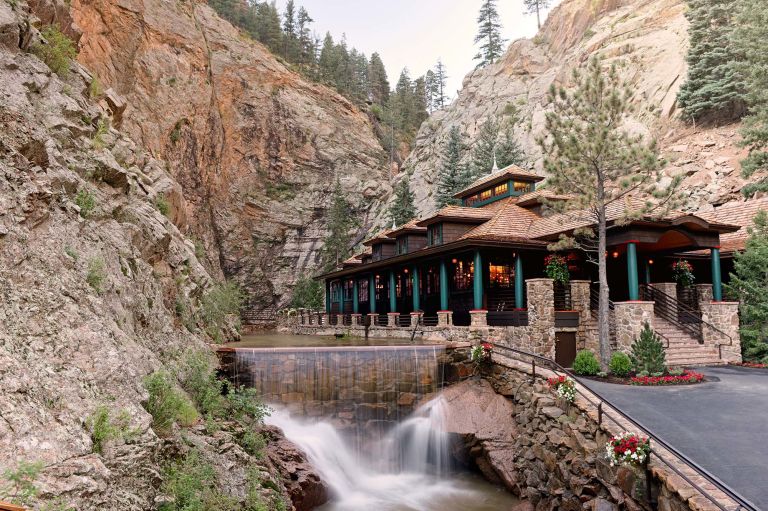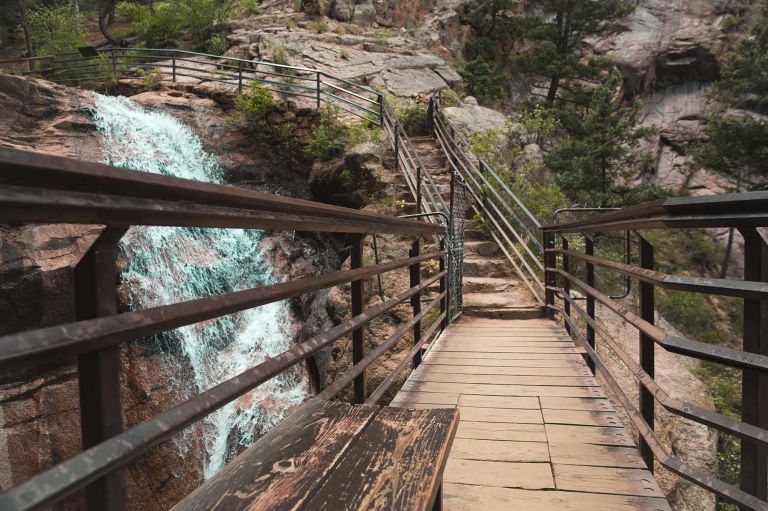History & Legacy
South Cheyenne Canyon is known as "The Grandest Mile of Scenery in Colorado."
One mile in length, it is a box-type canyon that the Ute Indians would use to stampede buffalo into to capture for food. The main canyon ends in a natural amphitheater down, which one side the Seven distinct falls plunge from with a height of 181 feet. The Seven Falls are named Ramona, Feather, Bridal Veil, Shorty, Hull, Weimer and Hill.
Upon entering the canyon, one sees massive walls of Pikes Peak granite and rock formations with names like Eagle’s Cliff, Half Dome, Alligator’s Head, Prospect Dome and Washington’s Profile. As one passes the old mule barn, the Pillars of Hercules rock formations are steep cliffs of pink granite that rise to 940 feet on the right side and 790 feet on the left, with only 41 feet at the narrowest point on the road.
Before 1872 the land was government-patented, and on December 5, 1872, Nathaniel Colby homesteaded and received the patent for 160 acres, including the falls. One year later, Colby sold the patent for $1,000 to the Colorado Springs Land Company, and on December 18, 1882, James Hull bought the property for $2,500. Hull already owned 160 acres west of Seven Falls. He secured 80 additional acres in 1885 for a total of 400 acres in the heart of Cheyenne Canyon.
On March 9, 1883, Hull began to build a road to Seven Falls, added a toll gate made of barbed wire fence, and charged a toll of 10 cents. Hull died in 1890 before the road was completed, and his sons took over the property, built the first wooden stairway up the falls, and finished the road.
In 1891 the wooden stairway was changed to 224 steps of iron, and in 1904 C. D. Weimer purchased the land and owned the property until 1946. The Falls became quite the tourist attraction as visitors arrived in Colorado Springs by train and then took an electric car or a carriage to view the falls. It was advertised as a half-hour drive from the city or a 1.5 hour drive from Manitou to Stratton Park. There, one could either walk thru the canyon or ride one of the burros of the “burro brigade” to the observation point. The winding road made its way thru the scrub oak, pine, fir, spruce and juniper trees, following the path of Cheyenne Creek. Lovely wildflowers of columbine, penstemon, asters, sunflowers and sumac changed throughout the seasons. A photographer would take a photograph of a tourist at the base of the falls with a pair of burros, one white and one black, named Rags and Satan. There was also a taxidermy reindeer that became a prop for tourists to sit on for photographs.
The pool of water at the base of the falls was home to Brook and Rainbow trout, and people would often fish there. Chipmunks, Abert squirrels, Mule deer, coyotes and other wildlife were nearby, along with hummingbirds, blue jays and the American dipper.
Above the falls lies a beautiful valley, a shady nook, and other smaller waterfalls. This was a favorite spot for author Helen Hunt Jackson who came to Colorado Springs in 1873 when she contracted tuberculosis. Called Inspiration Point, this place was her catalyst for one of her most famous poems titled Cheyenne Mountain and inspired her to write some of her most famous works. Her book Ramona has been reprinted over 400 times and is considered one of the best works written by a female American author. Hunt was an activist for the Native American Indians and their treatment by the U.S. Government. She was buried at the top of Seven Falls in 1885, and her remains were later moved to Evergreen Cemetery in Colorado Springs.
Al Hill of Dallas, Texas, purchased Seven Falls in 1946 and added a tunnel and elevator to the falls for viewing from Eagle’s Nest. He also added the beloved lights to Seven Falls for nighttime viewing, and tourists would visit the Falls and climb the stairs to feed the famous chipmunks and see Native American Indian dancers perform.
The Hills owned the property until they sold it on April 11, 2014, to Mr. Philip Anschutz and The Broadmoor. On June 22, 2015, The Broadmoor Seven Falls, Restaurant 1858, and the Woods course of The Broadmoor Soaring Adventure opened. In the 2016 season, the second adventurous zipline course was added. The Fins Course, featuring several custom-built suspension bridges and a controlled 180-foot rappel to the canyon floor. Offering a different perspective of the canyon, tickets for Soaring Adventure are purchased separately.






